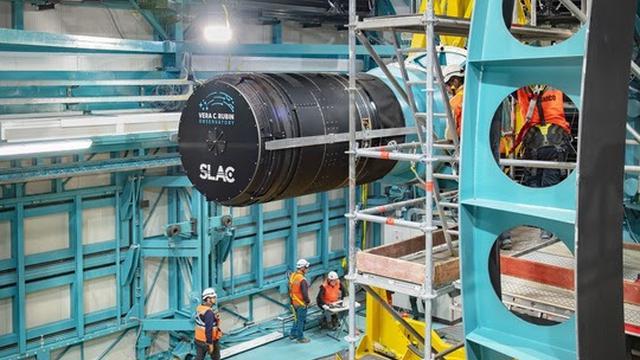Instrumentation
Vera C. Rubin Observatory Installs LSST Camera on Telescope
March 13, 2025
Observational Cosmology GroupThe Vera C. Rubin Observatory has reached a major milestone with the successful installation of the LSST Camera on its telescope.
The Vera C. Rubin Observatory has reached a major milestone with the successful installation of the LSST Camera —the largest digital camera in the world— on its telescope.
With this final optical component in place, the observatory now enters the last phase of testing before capturing its highly anticipated First Look images, paving the way for the groundbreaking Legacy Survey of Space and Time (LSST) to begin.
The LSST Camera holds the title of the largest digital camera ever constructed. Weighing more than 3,000 kilograms, this 3,200-megapixel instrument is the core of the Rubin Observatory’s optical system. It operates alongside an 8.4-meter combined primary-tertiary mirror and a 3.5-meter secondary mirror. Thanks to its innovative design, the observatory can capture both faint celestial objects and those that vary in brightness or position across its expansive field of view.
With the LSST Camera, the Rubin Observatory will continuously survey the southern night sky over the course of a decade, producing an ultra-wide, high-resolution time-lapse of the Universe. This ambitious project will unveil a wealth of discoveries, from asteroids and comets to pulsating stars and supernova explosions, bringing the dynamic cosmos into sharper focus than ever before.
Scientists worldwide will analyze Rubin Observatory’s data, driving groundbreaking discoveries and advancing our understanding of the Universe. This vast dataset will help trace cosmic evolution, explore the enigmas of dark energy and dark matter, and uncover answers to questions we have yet to conceive.

